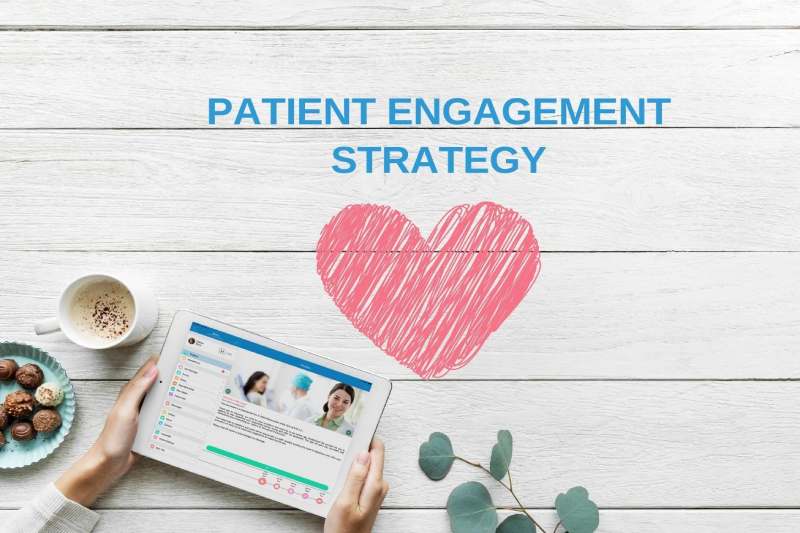Health
Eight Powerful Techniques to Raise Patient Involvement and Boost Medical Results

Patient engagement is an important component of healthcare that has a big impact on provider satisfaction and healthcare outcomes. In addition to adding to the workload and stress of healthcare providers, disengaged patients also put them at a greater disadvantage. Fortunately, there is good news: this risk factor can be changed. Through the application of efficient tactics, healthcare professionals can encourage patient involvement, initiating a favorable cycle of enhanced health results and heightened provider contentment. This article examines eight useful suggestions that can assist in reaching this objective.
Relationship Power between Patients and Providers
Improving patient engagement begins with fostering a strong relationship between the patient and the provider. By being actively involved in the patient’s healthcare journey and communicating with compassion, providers can cultivate these relationships. This entails being aware of the needs of the patients, paying attention to their worries, and quickly and effectively answering their questions.
Using Technology to Improve Communication
Providers now have a variety of tools at their disposal to streamline patient communication thanks to technological advancements. By utilizing telemedicine services, text message reminders, and electronic health records, clinicians can improve patient engagement by ensuring consistent patient interaction. These tools help with self-management of chronic conditions and treatment plan adherence in addition to facilitating more convenient communication.
Encouraging Patient Education
Providing patients with information about their medical conditions and available treatments is another practical strategy to boost involvement. In order to spread knowledge, providers can run workshops, provide instructional materials, and employ digital media. Patients are better able to make educated decisions about their healthcare and are more involved in the course of treatment as a result.
Early Identification of Patients at Risk
Encouraging patient engagement can be greatly increased by early identification of at-risk patients. Predictive analytics and other data-driven tools can help providers identify patients who may be at risk of poor health outcomes or disengagement. Upon identification, these patients can receive additional support and tailored care plans to increase their level of engagement.
Automating Procedures for Patient Engagement
Patient engagement can be enhanced by streamlining the healthcare experience for patients through automated processes such as medication reminders, appointment scheduling, and health tracking. These procedures are more efficient thanks to automation, which also lowers the possibility of mistakes and oversights.
Enhancing the Experience for Patients
The patient journey begins prior to the visit and continues through the phases of aftercare and payment collection. Providing patients with a seamless and trouble-free experience can help providers greatly increase patient engagement. This entails giving precise appointment instructions, presenting flexible payment alternatives, and guaranteeing prompt follow-up care.
Improving Gratitude
Technology can significantly improve patients’ ability to manage their own care. Patients can manage their medication, keep track of their health metrics, and stay informed about their conditions with the use of mobile apps and online platforms. This enhances patient involvement and produces better medical results.
In summary
In conclusion, patient involvement is an essential component of healthcare that has the potential to greatly enhance both provider satisfaction and health outcomes. Providers can create a positive cycle of patient activation and better outcomes by establishing strong relationships with their patients, using technology for communication, promoting patient education, early identification of at-risk patients, and automating patient engagement processes. Now is the moment to advance patient involvement and see the revolution it can bring about in the medical field.
-

 Sports4 weeks ago
Sports4 weeks agoAl Ahly vs Inter Miami, 2025 FIFA Club World Cup – Preview, Prediction, Predicted Lineups and How to Watch
-
Health3 weeks ago
Back to Roots: Ayurveda Offers Natural Cure for Common Hair Woes
-

 Tech3 weeks ago
Tech3 weeks agoFrom Soil to Silicon: The Rise of Agriculture AI and Drone Innovations in 2025
-

 Startup4 weeks ago
Startup4 weeks agoHow Instagram Is Driving Global Social Media Marketing Trends
-

 Sports3 weeks ago
Sports3 weeks agoFIBA 3×3 World Cup 2025: Full Schedule, Preview, and How to Watch
-

 Science4 days ago
Science4 days agoJuly Full Moon 2025: Everything You Should Need to Know, When and Where to See Buck Moon
-

 Gadget3 weeks ago
Gadget3 weeks agoThings to Know about Samsung Galaxy S26: What’s New and What’s Next
-

 Sports4 weeks ago
Sports4 weeks agoWorld Judo Championships 2025: Full Schedule, Date, Time, Key Athletes and How to Watch













